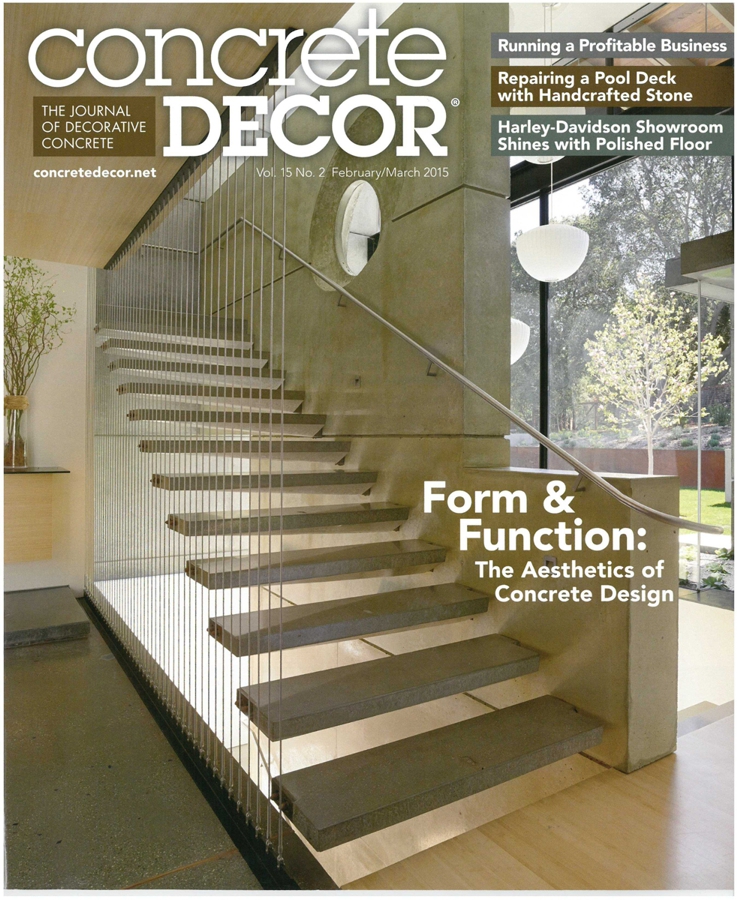
FEB / MARCH 2015
Form & Function: The Aesthetics of Concrete Design
by Joe Maty
EXCERPT:
In FuTung Cheng’s view, the term “decorative concrete” fails to convey the full measure of the material’s prowess in enhancing design. Coloring, texturing, stamping or staining don’t begin to tell the whole story.
Cheng, widely acknowledged as a leading figure in the use of concrete in architecture and often hailed as a “guru” in the building trade, considers concrete “integral” to design and architecture. The use of concrete extends beyond interior space and the objects within, such as countertops and fireplaces. It’s about the space itself being surrounded and embodied by the sculptural envelope of a substance. It’s about the whole of architecture.
“I like to use it structurally and integrally — form and function integrated together,” says Cheng. “You can treat the surface while the structure is poured in place. You have infinite opportunities to mold it, texture it, sculpt it, color it and refine it, simultaneously with the structural pour.”